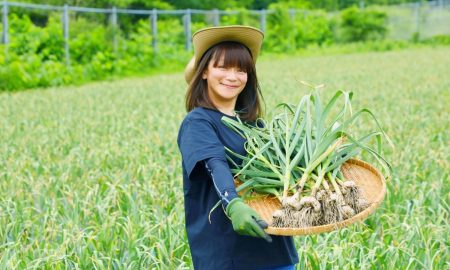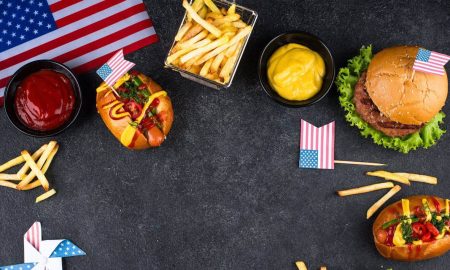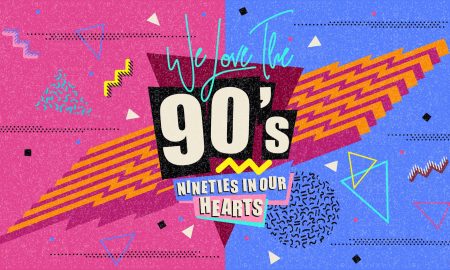The Argentinian pampas region is located around six hours by car from Buenos Aires. This subtropical grass steppe, which stretches over a seemingly endless space, consists of a humid pampas in the east and a dry one in the west. Swiss pop icon Dieter Meier has run the legendary Ojo de Agua farm since 1997, where he mainly focuses on cattle farming.
Sieh dir diesen Beitrag auf Instagram an
“The humid pampas would actually allow Argentina to be a bonafide miracle land for the finest quality – or just become the same as it once was again,” explains Dieter Meier. Since 1997, the 76-year-old (ex-)pop star, author, actor and busy jack-of-all-trades has been working to restore the Pampas to what it truly is: an agricultural jewel capable of producing food that is unparalleled due to its unique terroir.
In the land of the gauchos, as the cattle breeders there have been called for centuries, Meier’s primary focus is on traditional yet evolved cattle breeding. For over 20 years, the Swiss native has strived to ensure his cattle live according to the same strict animal welfare guidelines that apply in the EU.
Sieh dir diesen Beitrag auf Instagram an
And it does so successfully. Beef under the Ojo de Agua umbrella brand is among the best in the world; chef of the century Eckart Witzigmann, for example, speaks highly of it, and Germany’s top meat importer Frank Albers also carries it – an accolade inherently in terms of quality – in his top-class range. How does Meier do this? What brings a conceptual artist from Zurich, professional poker player, electro pioneer and god knows what else down to the Argentinean pampas to shovels cow dung and fills feed troughs?
And what does all this have to do with the fastest racing horses in the world?
700,000 hectares of the finest pampas
First thing’s first: Dieter Meier is an icon in Switzerland. With his avant-garde electro band Yello, he scored hits in the late 80s and early 90s like “The Race,” “Flag” and “Baby,” which also topped the charts in Austria and Germany.
Sieh dir diesen Beitrag auf Instagram an
Before this he was a professional poker player and an investor afterward. In a nutshell, Dieter Meier is one of those people who does what he wants to do and somehow achieves automatic success. For example, he and his partners bought the Swiss watch manufacturer Ulysse Nardin for the “pittance of 800,000 euros” and sold it 30 years later for 800 million francs.
At this point, we’ll skip over the fact that he was also a golfer on the Swiss national team and a major shareholder in the national banknote printing company. After all, this is not about Dieter Meier’s spectacular life, but rather about his even more spectacular Ojo de Agua cattle project. Meier already fell under Argentina’s spell in 1973. That year, he went with his father – a successful businessman – on a business trip to the country and became instantly fascinated by the landscape and the rich natural resources.
It was therefore only a matter of time before Meier returned to Argentina with a project of his own; by nature, a person like Meier has to have a project to tackle and lose themselves in. This happened in 1996, when Meier bought the legendary Ojo de Agua (eye of water) farm – we assume there is still something left over from the 800 million.
Sieh dir diesen Beitrag auf Instagram an
The name comes from the mineral-rich spring whose water allows the lush pampas grass to grow and, in general, sustains an entire ecosystem that benefits Meier’s cattle. The herds move across an entire 700,000 hectares of finest pampas under the guidance of Meier’s experienced gauchos. But how exactly does cattle farming work? What makes the meat of the Ojo-de-Agua cattle so special?
20 hard-working gauchos
Dieter Meier didn’t simply start the farm from scratch. Founded as early as 1868, its unique location, mineral-rich waters, climate and fertile soil earned it a reputation as a cadre school for the world’s fastest racehorses. For over 100 years, the fastest stud in the world came from this farm, and to this day the pedigree of the record-holding four-legged speed demons can be traced back to the Ojo de Agua.
Sieh dir diesen Beitrag auf Instagram an
In any case, Dieter Meier recognized the potential of this spot for cattle breeding – and did not compromise on making his dream come true. The pure-bred Hereford and Black Angus cattle are born on the farm. 20 employees, including gauchos with decades of experience, look after the herds that graze on the almost endless pastures all year round. “We work according to a strict protocol,” explains Sam Healy, who manages the farm as head gaucho.
“Everything here is geared towards grazing so that the animals can live freely and in a manner appropriate to their species. After all, pastures are the basis of nutrition. They are full of protein-rich alfalfa and a variety of different grasses. The pastures are divided into plots. To ensure that the animals have fresh grass every day, our gauchos take them from one plot to the next.”
Sieh dir diesen Beitrag auf Instagram an
Dieter Meier explains why this is done. “The most important thing is to only let the animals graze until the grass is still two fists high. This is because this phase of regeneration is the most complex. In other words, the gaucho makes sure to move the cows to other areas once the grass is only two fists high. A skilled gaucho can get between 20 and 35 percent more out of a piece of land using such methods, simply because he’s making the best use of the grass.”
A fillet with a twist
Each month the animals are classified according to size and weight, so that they can be allocated to a herd. By doing so, Meier and Healy ensure the cows are fed according to the appropriate plan and continually gain weight. The feeding process is very strategic. In the last 90 days, the purebred cattle are fed corn silage, which comes from the farm’s own sustainable production.
Let’s not forget: A great deal of wheat and other grasses grow over the 700,000 hectares. Feeding therefore also takes place outdoors on pastures. Within 24 months, Hereford and Black Angus cattle slowly and sustainably develop naturally grown muscle that tastes great – without hormones or other growth accelerators.

Image: Rational
The roast beef, known in Argentina as a Bife Angosto, is, for example, portioned into rump steaks and is undoubtedly a unique and unadulterated taste experience for the European palate. With its intense, dark red color and perfectly even marbling, the textured Angosto beef is also among the best that pure grazing meat can offer. In addition, it loses virtually no moisture when fried or grilled.
The hip roll is definitely on par with the rump steak. The advantages of Dieter Meier’s pasture meat can be seen with the naked eye on this hip cut. It is structured into relatively large fiber bundles, which already give a delicate, tender impression to the touch. This cut is especially enjoyable medium rare: In this case, the rump steak should not be cut in too thick a portion and should be room temperature before cooking.

Image: Shutterstock – stockcreations
However, brutally high heat is not suitable for this cut from pampas pasture. On the other hand, it turns out particularly well if it has been brought to just below the desired core temperature before roasting in a sous-vide bath. After it has rested briefly in warm conditions before being cut, it unfolds the entire flavorful flamboyance of the South American beef nation in one bite.
However, the difference between Meier’s gaucho pasture-raised meat and that from other parts of the world is probably most evident in the tenderloin filet. Although the tenderloin becomes incredibly tender due to its lack of movement, it is often rather understated in terms of taste. But this is not the case when it comes to the noble cuts of Meier’s Hereford and Black Angus cattle. Despite a comparatively low intramuscular fat content, the tenderloin boasts an exceptionally high juiciness and releases a hearty, authentic beef flavor across the palate.

Image: AdobeStock | Rawpixel.com
And is sometimes even served raw and unheated as carpaccio or tatar. One way or another, each cut clearly demonstrates Dieter Meier has created something in the wide, open pampas that more than lives up to Argentina’s image as a legendary beef mecca. It goes without saying that his hard-working gauchos get credit here as well.
Ribeye: The most prized piece on the entire neck – wonderfully marbled, extremely tender and really tasty. Two to three pieces of ribeye can be cut from the chuck eye roll.
Tenderloin – Filet: Most slaughter animals do not use the long, club-shaped muscle strand known as fillet or tenderloin. The meat is therefore particularly tender, lean and juicy. Compared to grass-fed beef, grain-fed beef has much more fat in it. Tenderloin is expensive because it is relatively small and very popular.
Porterhouse: A porterhouse steak is cut with tenderloin and the bone from flat roast beef. It is generally close to two and a half inches thick and weighs between 24 to 35 ounces.
This could interest you as well: Mono meat Mania















